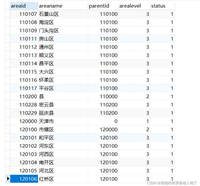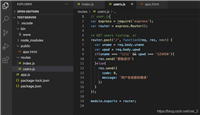如何封装ajax函数
一个ajax函数:
// 一个ajax函数
var xhr = null;
if(window.xmlhttprequest){
xhr = new xmlhttprequest;
}else{
xhr = new activexobject("microsoft.xmlhttp");
}
xhr.open("get","https://jsonplaceholder.typicode.com/users");
xhr.send(null);
xhr.onreadystatechange = function(){
if(this.readystate === 4){
console.log(xhr.responsetext)
}
}
封装自己的 ajax 函数
参数1:{string} 请求方法--method
参数2:{string} 请求地址--url
参数3:{object} 请求参数--params
参数4:{function} 请求完成后,执行的回调函数--done
function ajax(method,url,params,done){
// 统一将method方法中的字母转成大写,后面判断get方法时 就简单点
method = method.touppercase();
//ie6的兼容
var xhr = window.xmlhttprequest
? new xmlhttprequest()
: new activexobject("microsoft.xmlhttp");
//创建打开一个连接 open
//将对象格式的参数转为urlencoded模式
//新建一个数组,使用for循环,将对象格式的参数,
//以(id = 1)的形式,每一个键值对用 & 符号连接
var pairs = [];
for(var k in params){
pairs.push(k + "=" + params[k]);
}
var str = pairs.join("&");
//判断是否是get方法 , get方法的话,需要更改url的值
if(method == "get"){
url += "?" + str;
}
//创建打开一个连接
xhr.open(method,url);
var data = null;
if(method == "post"){
//post方法 还需要设置请求头、请求体
xhr.setrequestheader("content-type",
"application/x-www-form-urlencoded");
data = str;
}
xhr.send(data);
//执行回调函数
xhr.onreadystatechange = function(){
if(this.readystate == 4) {
done(json.parse(this.responsetext));
}return;
// 执行外部传进来的回调函数即可
// 需要用到响应体
}
}
//调用函数
//get方法
// ajax("get","http://localhost:3000/users",
// {"id":1},
// function(data){
// console.log(data);
// });
//post方法
ajax("post", "http://localhost:3000/users",
{ "name": "lucky","class":2,"age":20 },
function (data) {
console.log(data);
});
以上就是如何封装一个ajax函数的详细内容,更多关于封装ajax函数的资料请关注代码网其它相关文章!






发表评论